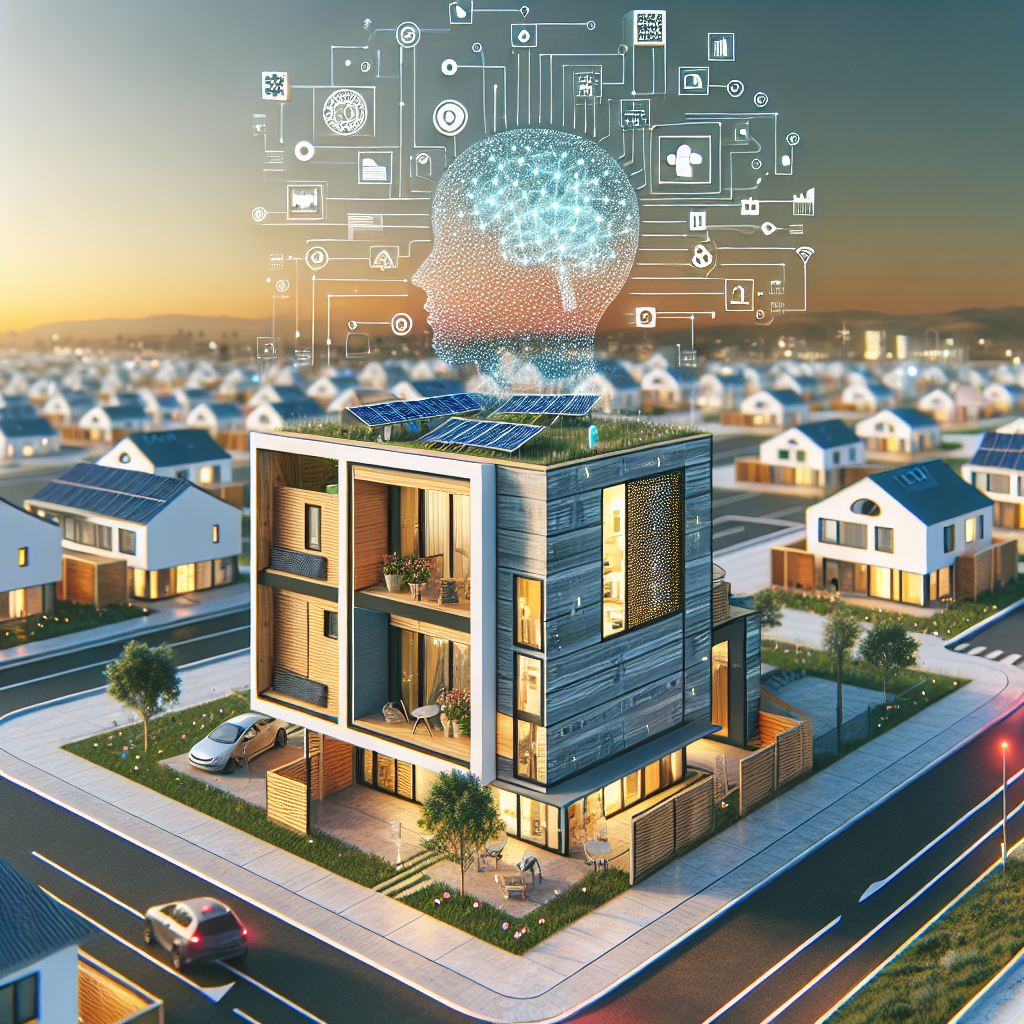Artificial Intelligence (AI) has revolutionized various industries, and the housing sector is no exception. With the growing demand for affordable housing, AI-driven design solutions have emerged as a powerful tool to streamline the process of creating cost-effective and sustainable housing options. By leveraging the power of AI, designers and developers can optimize the design and construction of affordable housing projects, leading to faster, more efficient, and more affordable housing solutions.
AI-driven design solutions for affordable housing encompass a wide range of technologies and tools that can be used to enhance various aspects of the design process. From site selection and building layout optimization to material selection and energy efficiency analysis, AI can play a crucial role in creating affordable and sustainable housing solutions. In this article, we will explore some of the key benefits of using AI-driven design solutions for affordable housing, as well as some frequently asked questions about this emerging technology.
Benefits of AI-Driven Design Solutions for Affordable Housing
1. Site Selection Optimization: One of the key challenges in developing affordable housing projects is finding suitable sites that are both cost-effective and well-suited for housing development. AI-driven design solutions can help designers and developers analyze various factors, such as land costs, accessibility, infrastructure, and environmental impact, to identify the most suitable sites for affordable housing projects. By using AI algorithms to analyze large datasets and generate insights, designers can make informed decisions about site selection, leading to more efficient and cost-effective housing projects.
2. Building Layout Optimization: Another important aspect of designing affordable housing projects is optimizing the layout of the buildings to maximize space efficiency and affordability. AI-driven design solutions can help designers create optimal building layouts that maximize the use of space and minimize construction costs. By using AI algorithms to generate and evaluate different layout options, designers can identify the most cost-effective and efficient designs for affordable housing projects.
3. Material Selection and Cost Estimation: AI-driven design solutions can also help designers and developers streamline the process of selecting materials and estimating construction costs for affordable housing projects. By using AI algorithms to analyze material properties, costs, and availability, designers can identify the most cost-effective and sustainable materials for housing construction. AI can also help designers generate accurate cost estimates for construction projects, enabling them to make informed decisions about budgeting and resource allocation.
4. Energy Efficiency Analysis: Energy efficiency is a key consideration in designing affordable housing projects, as it can have a significant impact on the long-term affordability and sustainability of the housing units. AI-driven design solutions can help designers analyze the energy performance of buildings and optimize their design to reduce energy consumption and costs. By using AI algorithms to simulate and analyze building performance, designers can identify opportunities to improve energy efficiency, such as optimizing insulation, ventilation, and lighting systems.
FAQs about AI-Driven Design Solutions for Affordable Housing
Q: How can AI help designers and developers optimize the design of affordable housing projects?
A: AI-driven design solutions can help designers and developers optimize various aspects of affordable housing projects, such as site selection, building layout, material selection, and energy efficiency. By using AI algorithms to analyze large datasets and generate insights, designers can make informed decisions about design optimization, leading to more cost-effective and sustainable housing solutions.
Q: What are some examples of AI-driven design solutions for affordable housing?
A: Some examples of AI-driven design solutions for affordable housing include AI algorithms for site selection optimization, building layout optimization, material selection, and energy efficiency analysis. These technologies can help designers and developers streamline the design process and create more cost-effective and sustainable housing projects.
Q: How can AI-driven design solutions benefit affordable housing projects?
A: AI-driven design solutions can benefit affordable housing projects in various ways, such as improving design efficiency, reducing construction costs, enhancing energy efficiency, and increasing sustainability. By leveraging the power of AI, designers and developers can optimize the design and construction of affordable housing projects, leading to faster, more efficient, and more affordable housing solutions.
Q: Are AI-driven design solutions accessible to small-scale developers and designers?
A: Yes, AI-driven design solutions are becoming increasingly accessible to small-scale developers and designers, thanks to the growing availability of AI tools and technologies. Many AI software providers offer affordable and user-friendly solutions that can help small-scale developers and designers optimize the design of affordable housing projects.
Q: How can designers and developers incorporate AI-driven design solutions into their affordable housing projects?
A: Designers and developers can incorporate AI-driven design solutions into their affordable housing projects by partnering with AI software providers, hiring AI experts, or investing in AI training and education. By leveraging the power of AI, designers and developers can optimize the design and construction of affordable housing projects, leading to more cost-effective and sustainable housing solutions.
In conclusion, AI-driven design solutions have the potential to revolutionize the affordable housing sector by streamlining the design and construction of cost-effective and sustainable housing projects. By leveraging the power of AI, designers and developers can optimize various aspects of affordable housing projects, such as site selection, building layout, material selection, and energy efficiency. As AI technologies continue to evolve and become more accessible, we can expect to see a growing number of affordable housing projects benefiting from AI-driven design solutions in the coming years.

